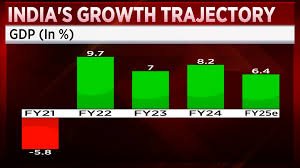GST E-Invoice Rule Update – Companies with Turnover ₹5 Crore Now Mandated to Generate E-Invoices
In a significant development in the realm of taxation and business compliance, the Indian government has updated the Goods and Services Tax (GST) e-invoice rule. According to the latest update, companies with an annual turnover of ₹5 crore or more are now mandated to generate e-invoices for their business transactions. This move aims to streamline the invoicing process, curb tax evasion, and promote transparency in the taxation system. In this article, we will explore the importance of this news for students preparing for government exams, delve into the historical context of e-invoicing in India, and provide five key takeaways that are crucial for their exam preparation.

Why This News is Important
1. Streamlining Taxation System
The decision to mandate e-invoicing for companies with a turnover of ₹5 crore or more is a significant step towards streamlining the taxation system. E-invoicing will help digitize the invoicing process, making it more efficient and reducing the scope for errors and discrepancies. With a streamlined system, tax authorities can easily verify transactions, which will lead to better compliance and a more organized tax administration.
2. Curbing Tax Evasion
Tax evasion has been a persistent challenge in India. By implementing e-invoicing for larger companies, the government aims to curb tax evasion and plug revenue leakages. E-invoicing will create a digital trail of transactions, making it difficult for businesses to underreport sales or claim false input tax credits. This measure is expected to boost tax collections and strengthen the country’s fiscal position.
3. Encouraging Digital Transformation
The introduction of e-invoicing is a significant step towards encouraging digital transformation in the business landscape. As companies comply with the new rule, they will adopt digital technologies to generate, transmit, and store e-invoices. This will not only lead to increased transparency but also promote a more tech-savvy business environment in the country.
Historical Context:
E-invoicing was first introduced in India on October 1, 2020, for businesses with an annual turnover of ₹500 crore or more. The aim was to automate the process of invoice generation and reporting for GST purposes. Gradually, the scope of e-invoicing was expanded to include businesses with lower turnovers. The recent update mandating e-invoicing for companies with a turnover of ₹5 crore or more is a testament to the success and positive impact of e-invoicing in curbing tax evasion and enhancing tax compliance.
Key Takeaways from “GST E-Invoice Rule Update – Companies with Turnover ₹5 Crore Now Mandated to Generate E-Invoices”
| S.No. | Key Takeaway |
|---|---|
| 1. | Companies with an annual turnover of ₹5 crore or more must now generate e-invoices for their transactions. |
| 2. | The move aims to streamline the taxation system, enhance transparency, and curb tax evasion. |
| 3. | E-invoicing will encourage digital transformation in business operations and promote a tech-savvy business environment. |
| 4. | It is expected to simplify business operations, leading to faster payment cycles and improved cash flow management. |
| 5. | Aspiring students should stay updated with such changes as questions related to taxation and economic reforms are common in various government exams. |
Important FAQs for Students from this News
What is the recent update in the GST e-invoice rule?
The recent update in the GST e-invoice rule mandates companies with an annual turnover of ₹5 crore or more to generate e-invoices for their business transactions.
Why is e-invoicing important for businesses?
E-invoicing streamlines the invoicing process, reduces errors, and promotes transparency in the taxation system. It also helps in curbing tax evasion and encouraging digital transformation.
What is the historical context of e-invoicing in India?
E-invoicing was first introduced in India on October 1, 2020, for businesses with an annual turnover of ₹500 crore or more. The recent update expands its scope to companies with a turnover of ₹5 crore or more.
How does e-invoicing impact business operations?
E-invoicing automates invoice generation, easing business operations by reducing manual efforts and facilitating faster payment cycles.
Why is staying updated with e-invoicing news crucial for government exam aspirants?
Questions related to taxation, economic reforms, and policy changes are common in government exams. Understanding the implications of e-invoicing helps students tackle such questions effectively.
Some Important Current Affairs Links

















 Exciting News!
Exciting News!  Join Our Telegram Channel Now!
Join Our Telegram Channel Now!
 Join our Telegram channel for a thrilling adventure into the world of daily current affairs.
Join our Telegram channel for a thrilling adventure into the world of daily current affairs. 
 Don’t miss out on the latest updates and insights! Click to join now and be part of the knowledge revolution!
Don’t miss out on the latest updates and insights! Click to join now and be part of the knowledge revolution! 
